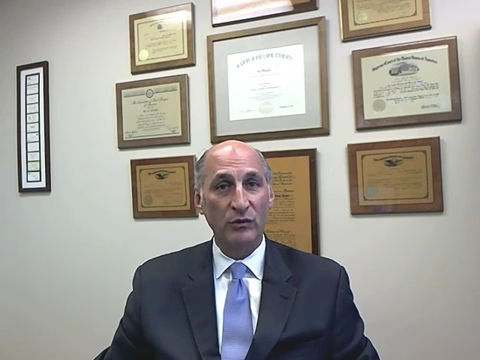Railroad Workers Exposed to Asbestos | New York City Personal Injury
Joseph Williams
Railroad Workers Exposed to Asbestos
How were railroad workers exposed to asbestos, and what can they do about it if they get mesothelioma? Hi, I’m Joe Williams, I’m a mesothelioma trial attorney and I want to talk to you about the types of exposures that workers on the railroad would have confronted during the course of their working career.
Protection With FELA statute
The first thing you need to know is that railroad employees are protected under the FELA statute. It’s a federal statute, the Federal Employers Liability Act, which requires the railroad to provide a safe working environment for their railroad employees. So if the railroad was negligent and not providing a safe working atmosphere, and if the employee gets sick and gets mesothelioma as a result, the railroad can be held legally responsible for that.
A Former Client
Let me illustrate this by talking to you about a former client of my office who was a railroad worker. Now, this railroad worker worked on locomotives and trains as well as the cars themselves and he was exposed to asbestos from the insulation on the exhaust system of the locomotives, to asbestos from the controls and switches in the electrical components of the cars themselves, and he was exposed to asbestos from the work that others did around him with asbestos containing brakes that existed on the cars. There was also iron brakes, but some of them were made of asbestos. All of these exposures contributed during the course of a working lifetime to, unfortunately, give this client mesothelioma, and when he was diagnosed with mesothelioma he wanted to know what he could do about it. After an understanding that the FELA statute was designed to protect him, he was able to bring a claim against the railroad under the FELA statute.
Now why am I telling you this? It’s because you have questions about mesothelioma and the types of exposures that railroad workers would confront on the job. I’m Joe Williams, at my law firm we represent mesothelioma victims each and every day, and we deal with issues like this every day. If you have questions I invite you to contact our office. We are here to answer your questions. Thank you for listening.
Railroad Workers Exposed to Asbestos
How were railroad workers exposed to asbestos, and what can they do about it if they get mesothelioma? Hi, I’m Joe Williams, I’m a mesothelioma trial attorney and I want to talk to you about the types of exposures that workers on the railroad would have confronted during the course of their working career.
Protection With FELA statute
The first thing you need to know is that railroad employees are protected under the FELA statute. It’s a federal statute, the Federal Employers Liability Act, which requires the railroad to provide a safe working environment for their railroad employees. So if the railroad was negligent and not providing a safe working atmosphere, and if the employee gets sick and gets mesothelioma as a result, the railroad can be held legally responsible for that.
A Former Client
Let me illustrate this by talking to you about a former client of my office who was a railroad worker. Now, this railroad worker worked on locomotives and trains as well as the cars themselves and he was exposed to asbestos from the insulation on the exhaust system of the locomotives, to asbestos from the controls and switches in the electrical components of the cars themselves, and he was exposed to asbestos from the work that others did around him with asbestos containing brakes that existed on the cars. There was also iron brakes, but some of them were made of asbestos. All of these exposures contributed during the course of a working lifetime to, unfortunately, give this client mesothelioma, and when he was diagnosed with mesothelioma he wanted to know what he could do about it. After an understanding that the FELA statute was designed to protect him, he was able to bring a claim against the railroad under the FELA statute.
Now why am I telling you this? It’s because you have questions about mesothelioma and the types of exposures that railroad workers would confront on the job. I’m Joe Williams, at my law firm we represent mesothelioma victims each and every day, and we deal with issues like this every day. If you have questions I invite you to contact our office. We are here to answer your questions. Thank you for listening.










